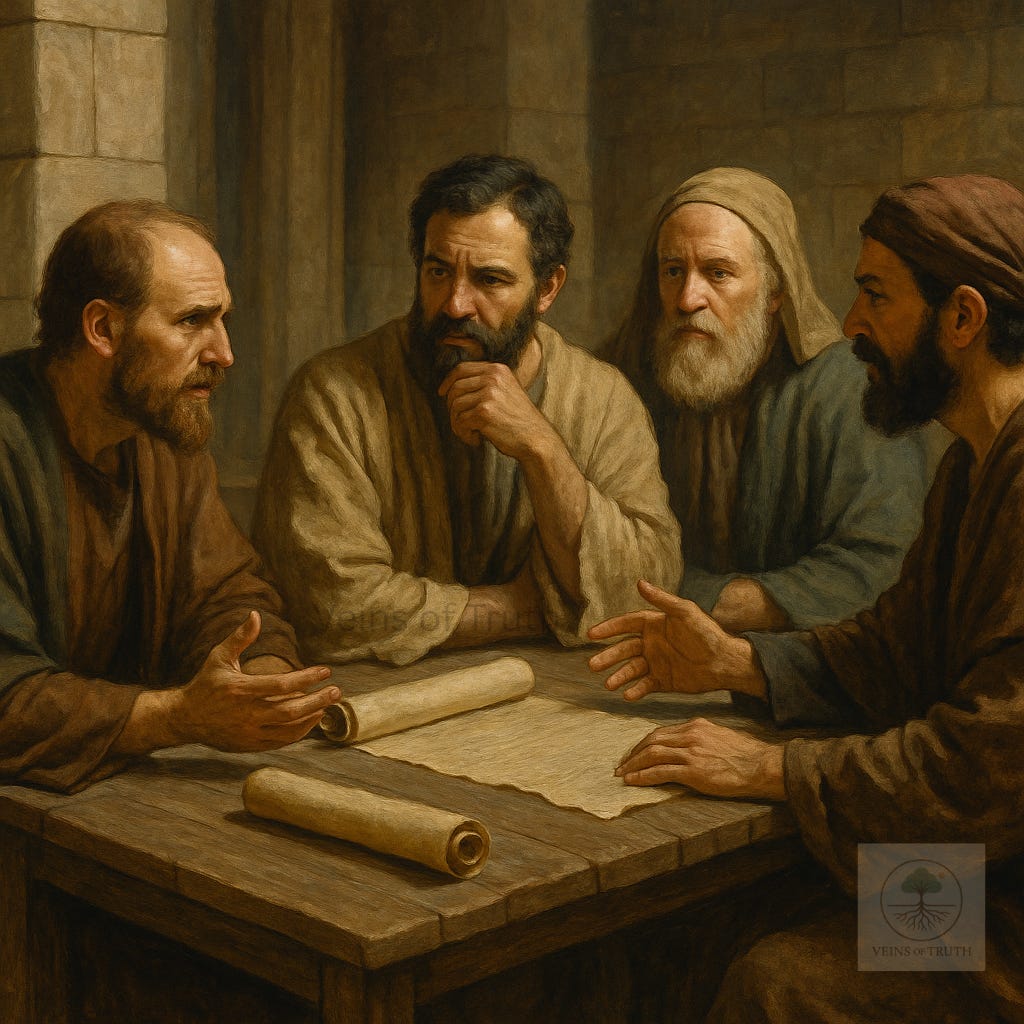When Christianity began in the first century, it was not a single, unified movement. The followers of Jesus came from different backgrounds, spoke different languages, and carried different ideas about who He was and what His message meant. Without a fixed New Testament, each community relied on its own traditions, oral teachings, and written accounts. These differences led to the rise of multiple sects, each claiming to represent the true faith.[1]
The first two centuries were a time of theological experimentation and sharp disagreement. Some groups held tightly to Jewish law, while others rejected it entirely. Some emphasized mystical knowledge, while others insisted on the authority of the apostles. These early divisions set the stage for the later formation of the New Testament canon and the definition of “orthodox” Christianity.[2]
The Apostolic Period (c. 30–70 CE)
According to Christian tradition, Jesus appointed twelve close followers called apostles during his ministry. These Twelve were considered His primary messengers, sent to preach and continue His work after His departure. In Christian belief, they included Peter, John, and others, but not Paul.
Historians agree Jesus had a core group of disciples, but the specific number “twelve” and the event of formally appointing them come only from Christian sources written decades later. No contemporary non-Christian historical records confirm the selection of the Twelve. What these apostles originally taught about Jesus is also known only from Christian tradition, which presents them as proclaiming Him the Messiah and Son of God. Islamic sources, by contrast, refer to Jesus’ close followers as al-hawariyyun, faithful supporters who recognized Him as a prophet and messenger of Allah, without assigning Him divinity.
The earliest Christians were those who had seen Jesus or learned directly from these apostles. The central leadership of the early movement was in Jerusalem, under James (called “the brother of the Lord” in Christian texts), along with Peter and John.[3] The movement at this stage remained closely tied to Judaism, observing the Law of Moses while proclaiming Jesus as the Messiah.[4]
Paul, originally a Pharisee who persecuted early followers, later became a Christian missionary. Unlike the Twelve, he claimed apostleship based on a vision of the risen Jesus after His death. His missionary work brought a new challenge: many Gentiles were joining the faith, and Paul argued they should not be required to follow the full Jewish law. This caused tensions with Jewish Christians who believed the Law remained binding.[5] These disputes are recorded in the New Testament itself, especially in Galatians 2 and Acts 15, which describe debates between Paul and the Jerusalem leadership about circumcision and the Law.[6]
The destruction of the Jerusalem Temple by the Romans in 70 CE marked a turning point. The center of authority in Jerusalem collapsed, and leadership shifted to other cities like Antioch, Rome, and Alexandria.[7] Without the unifying presence of the original apostles, local churches began developing distinct beliefs and practices.
Diversity After the Apostles (c. 70–100 CE)
After the death of the apostles, Christian communities had to preserve the teachings of Jesus without a universally agreed set of writings.[8] Different regions produced and used different gospels and letters.[9] Oral tradition was still powerful, but the message varied from place to place.
This period saw the emergence of movements that emphasized different aspects of Jesus’ life and message. Some still identified strongly with Judaism, while others broke away entirely. The seeds of later heresies were already being planted, as outside philosophical and religious ideas began influencing Christian thought.[10]
Major Sects and Movements in the First Two Centuries
Jewish-Christian Sects
These groups saw themselves as the true heirs of Jesus’ mission, keeping the Mosaic Law while believing in Him as the Messiah.
Nazarenes : Accepted Jesus as the Messiah, observed the Law, and used the Hebrew Scriptures along with certain gospel traditions.[11]
Ebionites : Rejected the divinity of Jesus, viewing Him as a human prophet chosen by God. They upheld strict Torah observance and rejected Paul as an apostate from the Law.[12]
Gnostic Groups
Gnosticism was a broad religious movement that blended Christian language with mystical and philosophical ideas. It often taught that the material world was created by a lesser deity and that salvation came through secret spiritual knowledge.[13]
Sethians : Wove elaborate mythologies about divine beings, the creation of the world, and the role of the biblical figure Seth.[14]
Valentinians : Founded by Valentinus, they used Christian terms but gave them symbolic meanings drawn from Gnostic cosmology. They had their own gospel interpretations and a spiritualized view of salvation.[15]
Marcionites
Keep reading with a 7-day free trial
Subscribe to VEINS OF TRUTH to keep reading this post and get 7 days of free access to the full post archives.


